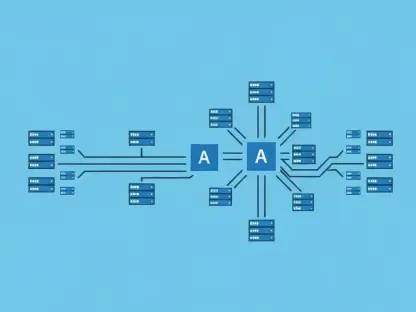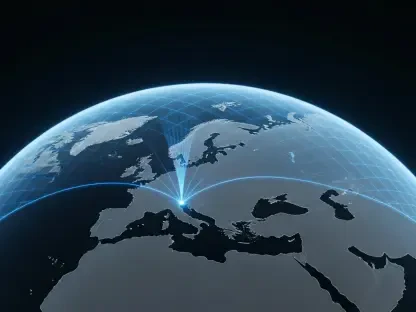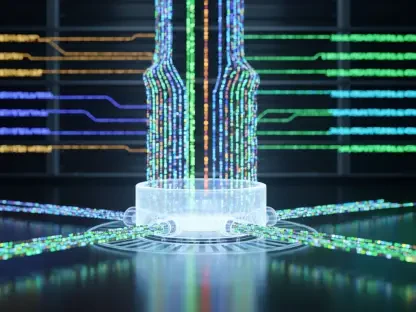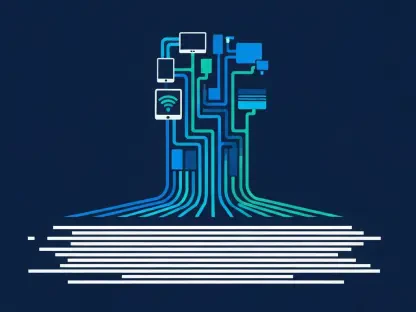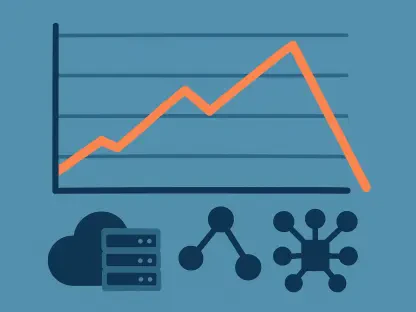Once, a Continuous Integration with Continuous Delivery or Deployment pipeline was a simple conveyor belt; developers pushed code, ran a handful of tests, and the build either passed or failed. Today, engineers envision something far more sophisticated—a pipeline that practically runs itself. Powered by AI, modern CI/CD is shifting from brute automation toward a self-aware, self-healing system.
But an autonomous pipeline is about more than speed or convenience. It must guard the entire software supply chain. Recent breaches underscore the stakes. In April 2025, attackers injected malicious code into a popular GitHub Action (tj-actions/changed-files), compromising over 23,000 repositories. In response, autonomous CI/CD is being redefined, and code is scanned and secured at every step. Dependencies are verified, secrets are monitored, and anomalies trigger safety measures—often before a human even notices.
In this new era, pipelines must listen to their own telemetry, apply machine learning to spot trouble, and act in real time. Read on to discover more about what makes this process possible.
Pipelines That Heal and Learn
An AI-powered pipeline should be thought of as a living system. It analyzes every build log and test result, learns the normal “pulse” of its environment, and reacts like a well-tuned body. For example, if a surge in flaky test failures is detected, the pipeline might autonomously rerun jobs on fresh agents or pin a new test strategy, avoiding a full roll-out crash. Software engineer Kevin Sebastian describes this shift vividly: “With AI-powered pipelines, [the] pain starts to fade… These smart systems predict problems, fix themselves, and let developers focus on building”.
How does this work? Under the hood, engineers feed telemetry—build durations, test failure rates, infrastructure metrics—into ML models. Tools like AWS SageMaker learn a baseline of healthy pipeline behavior. When something deviates, the system triggers an alert or a fix. For example, AWS engineers demonstrate how a SageMaker anomaly detector watches metrics (test time jumps, memory spikes) and then automatically retries failed tests or rolls back problematic releases. Similarly, Google and Netflix have long used ML-powered chaos and monitoring tools to anticipate failures. Netflix’s pipelines learn from past outages to preemptively pause or adjust deployments.
These AI extensions also optimize performance. Machine learning can prioritize critical tests, flag flaky suites, or even suggest parallelization strategies. In one case, integrating AI copilots into a CI workflow cut build times by roughly 40% thanks to smarter caching and test distribution. Eventually, every failed build or performance hiccup becomes training data, turning yesterday’s problems into tomorrow’s resilience.
Guardians of the Supply Chain
With great autonomy comes great responsibility—especially for security. The software supply chain is now a prime attack vector, and autonomous pipelines must act like vigilant sentries. Consider dependency attacks: malicious actors might slip rogue packages into the Node Package Manager, hoping the Continuous Integration system will blindly install them. An AI-enabled pipeline can mitigate this by continuously vetting dependencies.
Credential leaks are another silent killer. Hard-coded keys or leaked tokens in code, environment files, or logs can give attackers unintended access. AI helps here too: continuous scanning of source and build artifacts can sniff out secrets exposed by accident. For instance, delivery-shield systems detect unencrypted tokens in code or CI logs and instantly alert the team. When such a leak is spotted, the pipeline might automatically quarantine the build, rotate credentials, or enforce stricter storage policies. This kind of real-time “secrets defense” was hard to imagine a few years ago. Now, ML can flag suspicious strings at machine speed.
Runtime anomalies form a third front. A pipeline agent downloading an unexpected script or an application container behaving oddly (CPU spikes, irregular network traffic) can indicate a breach in flight. AI-driven monitoring tools watch logs and metrics for precisely these symptoms. If, say, a deployment suddenly pulls from an unknown URL, the system can instantly interrupt the rollout. AWS’s guide to self-healing pipelines explicitly includes network anomaly detection. Any “unexpected downloads of scripts” or unusual memory accesses trigger automated safeguards. In short, the pipeline’s autopilot is also its eyes and ears, sniffing out strange behavior at every hop.
These capabilities are no longer just theoretical. Tools already embed ML into CI/CD. GitHub’s new “Continuous AI” project has spawned an ecosystem of coding agents (Copilot, Claude Code, etc.) that can work autonomously in GitHub Actions. Companies report numerous benefits. In one case, embedding Snyk’s AI-powered scanner in CI reduced high-severity vulnerabilities by around 50%. These early adopters suggest that AI is raising the guard, catching issues that slip through traditional defenses.
Adding AI to the DevOps Toolbox
The AI revolution in CI/CD is also spawning new classes of tools and frameworks. On the infrastructure side, cloud providers now offer ML platforms tailored for DevOps data (AWS SageMaker, Google Vertex AI, etc.), which teams use to craft custom anomaly detectors or optimizers. Emerging vendors market “autonomous delivery” platforms; for example, Harness advertises AI agents that can monitor deployments and roll back unhealthy releases automatically. On the open-source front, the “awesome-continuous-ai” repository documents dozens of projects where AI agents autonomously handle code generation, testing, security review, and even deployment steps.
Yet, even as new tools appear, CI/CD remains an ecosystem of many components, such as source control, artifact registries, container runtimes, and testing frameworks. Successful autonomous pipelines glue these pieces together with AI-savvy platform engineering.
For example, Spinnaker pipelines can call out to Jenkins jobs that invoke ML analysis; GitLab CI can embed Python ML scripts at key stages; and GitHub Actions can include pretrained Docker containers for security scanning. The “flavor” of AI—whether it’s a random-forest anomaly detector or a ChatGPT-style planning agent—matters less than the fact that it permeates the workflow. The common thread is feedback: engineers annotate failures, feed that history into models, and the AI refines the process continuously.
Culture Shock: The Human Factor
As powerful as AI-driven CI/CD can be, the biggest changes are often cultural. Embedding AI into pipelines upends assumptions about who does what and how safe is safe enough. Some engineers may distrust an opaque model making build-or-break decisions, and managers might worry about compliance or “who signed off on the AI’s fix?” Resistance is natural. One industry writer mentions that people typically see AIOps as a threat rather than an aid, fearing job loss or loss of control.
Overcoming this “culture shock” requires framing AI as a “colleague”, not a replacement. Leaders should emphasize that AI’s goal is to reduce toil—automating the drudgery of repetitive triage, so developers can focus on innovation.
Organizations should start small. As a B2B leader, you can pilot an AI-powered anomaly alert while keeping a human “reset button” on it. Celebrate each time AI catches a hidden issue or cuts issue-resolution time, treating those victories as proof points. Training is crucial, too. Cross-train dev and security teams on how the AI models work and on how to interpret their outputs. Assign an “AI shepherd” or owner to manage models, keep them updated, and tune thresholds.
OpsMx ASPM experts echo this in the supply-chain context. They advise building a “culture of continuous improvement and collaboration” across Dev, Sec, and Ops, rather than siloed handoffs.
In practice, organizations finding success with AI in CI/CD often evolve roles. Some hire DevSecOps engineers whose job is partly to liaise with the AI systems—validating alerts, tuning models, and ensuring the outputs make sense. Others create “AI champions” within each team who understand both the ML side and the application side.
Clear accountability also helps. When an AI system proposes a fix (such as pinning a vulnerable dependency), human review should still be implemented until trust is built. Over time, as people see consistent value (faster fixes, fewer missed bugs), the mindset can shift.
Trust and Transparency: Explainability Matters
Central to that human trust is explainability. An autonomous pipeline must not be a black box. Engineers need to know why an AI suggestion or action occurred. This means rich logging and visibility. Every AI-driven decision (rerun job, block deployment, roll back, etc.) should be annotated with its rationale. For instance, if the model flags a deployment for rollback, it should tag which metrics spiked (error rate, latency, test failures). Ideally, the pipeline dashboard shows an audit trail, so teams can verify or override decisions.
Governance frameworks make this explicit. Many experts recommend introducing approval gates and gradual escalation policies when first unleashing AI. In practice, a pipeline might automatically re-run a flaky test on first failure, but only roll back a production deploy after a human clicks “yes” on an AI recommendation.
Security and compliance requirements also drive explainability. In highly regulated fields, every change—even an AI-applied one—may need to be traceable.
Ultimately, explainability is a two-way street: the AI learns from humans and vice versa. If a model repeatedly misclassifies a dependency or misjudges an anomaly, that should prompt a review of the training data or the algorithm. Start with the AI in “advisory” mode and let confidence grow. Eventually, the team may trust it to act autonomously, but only after crossing several trust checkpoints. In this way, the pipeline becomes accountable.
Roadmap to Autonomous CI/CD
How do you move a traditional DevOps organization toward this vision without causing chaos? The path should be gradual and pragmatic:
Unify your observability and data. Just as smart hotels needed integrated sensors and systems, a pipeline needs a single source of truth. That means consolidating logs, metrics, and security alerts (from static application security testing, software composition analysis, secrets scanners, etc.) into a unified platform or data lake.
Identify early targets for AI. A good starting point is anomaly detection in staging environments. For example, use ML to learn what normal test pass rates and resource usage look like, then flag deviations. You might also automate trivial tasks: have AI suggest labels for failing tests, predict flaky tests to skip, or cache build artifacts. The key is choosing high-impact pain points and applying AI in a controlled slice of the pipeline.
Embed security in every step. “Shift left” is the old mantra—now it’s “shift continuous”. Integrate AI-powered security scanners (dependency checks) as early as code commit, and use ML-driven monitoring in production. At the same time, codify your policies: enforce that no dependency is ever unpinned, that all secrets are vault-protected, and that every update is signed or approved.
Train your team and refine processes. Run workshops on how the AI models make decisions. Share incident post-mortems focusing on AI successes and failures alike. Set up a governance board or a ChatOps channel for AI alerts, where people can discuss and tune thresholds.
Iterate to intelligence. As with any DevOps improvement, this is a loop: deploy, measure, learn, improve. Upgrade the models with new data, experiment with more advanced AI such as generative playbooks and reinforcement learning for pipeline scheduling, and continuously widen the scope of autonomy.
Along the way, keep one foot on the brake pedal (audit logs, rollback safeguards) and one eye on innovation.
The Intelligent Future of DevOps
Today’s CI/CD pipelines are evolving beyond automated scripts into something closer to intelligent systems. When done right, the ultimate luxury of the pipeline is that engineers can push code and trust it will be treated with care—tested thoroughly, deployed securely, and optimized continuously, without them manually hovering over every step.
The journey will be bumpy. Data silos must be torn down, skills must be grown, and trust must be built step by step. But the payoff is compelling.
The software supply chain may never be perfectly safe, but AI is proving to be a powerful ally. By redefining autonomy to include vigilance and adaptability, the next time you merge a pull request, your pipeline might just do the same. Quietly watch, learn, and keep you safe so you can rest a little easier.




